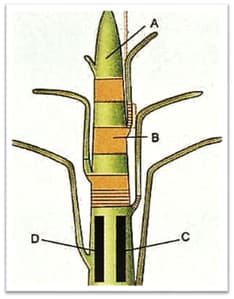Plant Tissues
Plant Tissues: Overview
This topic talks about plant tissues. It explains simple tissues along with their types, such as meristematic tissue and permanent tissue. The characteristics of meristematic tissue are also discussed here.
Important Questions on Plant Tissues
Deposition of which chemical makes the cork impervious to water? (Cellulose/ Suberin/ Lignin)
You have a stained slide of T.S. of the stem. Your teacher says that it is of a dicot stem. Which characters you will observe to confirm it?
There are two types of compound plant tissues: xylem and phloem. In which characters, two differ from each other?
Study the stained slides of collenchyma and sclerenchyma. Enlist two differences between two types of tissues you will notice in these slides.
You have a T.S. of the petiole of aquatic plant Eichhornia (water hyacinth). Enlist the characteristics of a peculiar type of parenchymal tissue.
You are given one stained slide each of parenchyma and collenchyma. Which differences will you observe between them? Enlist two of them.
Give the location and functions of stomata in the plants.
Aquatic hydrophytes are characterised by the presence of aerenchyma with air cavities to provide buoyancy to the plants. Aerenchyma is a modified:
Observe the following diagram. Select the meristem responsible for secondary growth and increase in diameter.

Discuss the position, structural peculiarities and main function of areolar connective tissue.
What do you mean by compound tissue? Explain a plant compound tissue with the help of a labelled diagram.
Which plant tissue cells have localized thickenings at their corners? State the significance of such thickenings.
Enlist differences between meristematic and permanent tissue on the basis of division power and nature of cells.
The water-conducting tissue generally present in gymnosperm is
Survival of plants in the terrestrial environment has been made possible by the presence of:
Cork cells are made impervious to water and gases by the presence of:
Flexibility in plants is due to
Parenchymal cells are:
A nail is inserted in the trunk of a tree at a height of 1 metre from the ground level. After 3 years the nail will
If the tip of the sugarcane plant is removed from the field, even then it keeps on growing in length. It is due to the presence of
